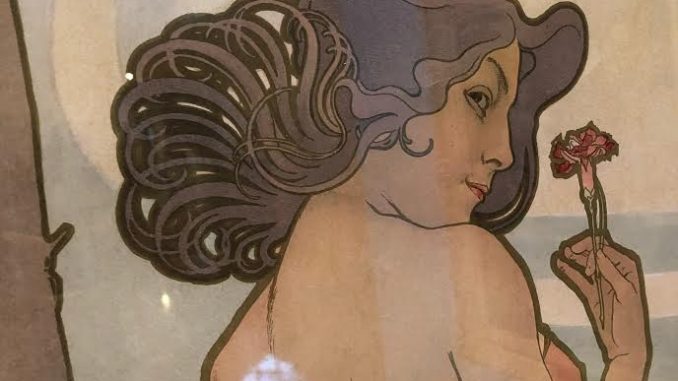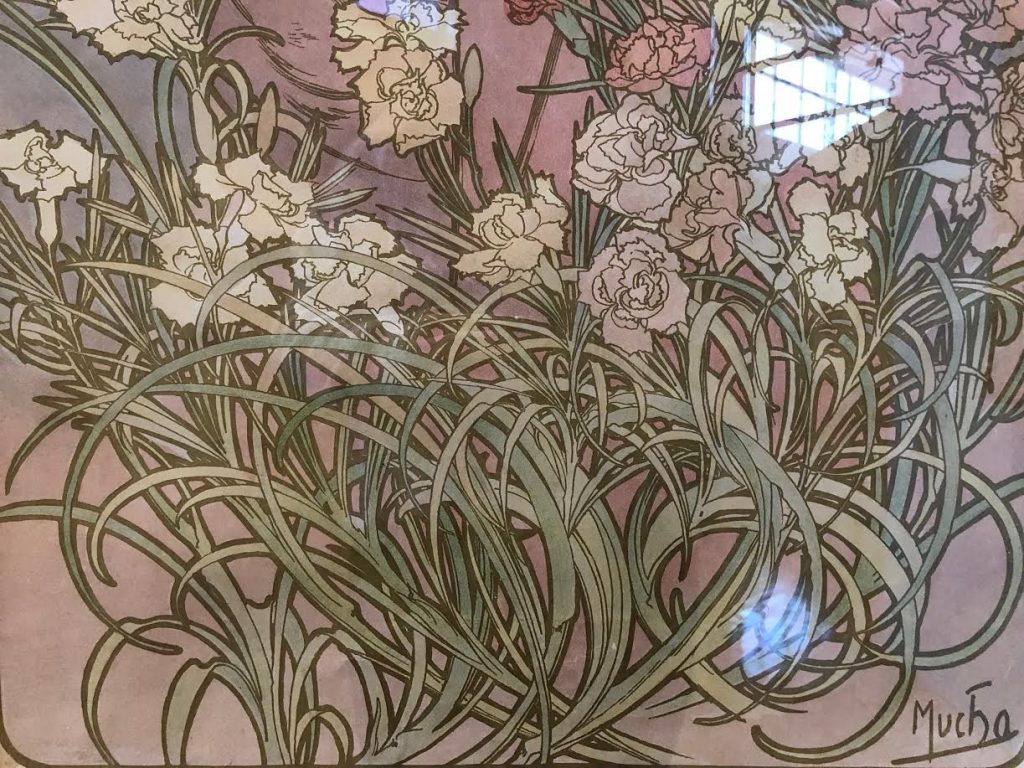
 Oeillet was created by a Czech artist named Alphonse Mucha in 1898 at the height of the Art Nouveau movement. In Czech, Art Nouveau is called Secese, and closely embodied similar stylistic elements found throughout Europe. The Art Nouveau (or New Art) era was an incredibly popular style among a myriad of art mediums including architecture, painting, sculpture, and decorative arts. The era is predominately characterized by the intricate floral designs found in almost every piece. A lot of Art Nouveau artists used soft colors and organic lines and shapes when creating their works to evoke a natural and pleasant energy. At this time, Art Nouveau works became engulfed in the increased popularity of printing. This work specifically was a mass produced print where the relatively flat and simple lines created beautiful prints that many households and businesses could purchase and display.
Oeillet was created by a Czech artist named Alphonse Mucha in 1898 at the height of the Art Nouveau movement. In Czech, Art Nouveau is called Secese, and closely embodied similar stylistic elements found throughout Europe. The Art Nouveau (or New Art) era was an incredibly popular style among a myriad of art mediums including architecture, painting, sculpture, and decorative arts. The era is predominately characterized by the intricate floral designs found in almost every piece. A lot of Art Nouveau artists used soft colors and organic lines and shapes when creating their works to evoke a natural and pleasant energy. At this time, Art Nouveau works became engulfed in the increased popularity of printing. This work specifically was a mass produced print where the relatively flat and simple lines created beautiful prints that many households and businesses could purchase and display.
 In looking at this specific work, Oeillet is a lithograph painted in watercolors. After this work was printed by the lithograph, the artist revisited the new print with watercolors, creating a final aquarelles (or watercolor work). It is also one of four pieces in the series titled Les Fleurs, each panel dedicated to a different woman and flower. In each work, a woman is completely encased by whatever flower is found predominately in that season and is entitled the name of the flower. Here, a woman is entrapped in oeillets, or carnations.
In looking at this specific work, Oeillet is a lithograph painted in watercolors. After this work was printed by the lithograph, the artist revisited the new print with watercolors, creating a final aquarelles (or watercolor work). It is also one of four pieces in the series titled Les Fleurs, each panel dedicated to a different woman and flower. In each work, a woman is completely encased by whatever flower is found predominately in that season and is entitled the name of the flower. Here, a woman is entrapped in oeillets, or carnations.
To learn more about this piece, visit Miami University Art Museum to see 40 at 40: Celebrating 40 Years in Gallery 3!
